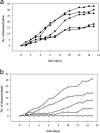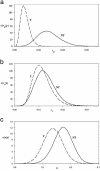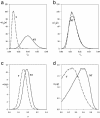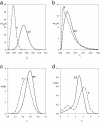Bayesian analysis of botanical epidemics using stochastic compartmental models
- PMID: 15302941
- PMCID: PMC514444
- DOI: 10.1073/pnas.0400829101
Bayesian analysis of botanical epidemics using stochastic compartmental models
Abstract
A stochastic model for an epidemic, incorporating susceptible, latent, and infectious states, is developed. The model represents primary and secondary infection rates and a time-varying host susceptibility with applications to a wide range of epidemiological systems. A Markov chain Monte Carlo algorithm is presented that allows the model to be fitted to experimental observations within a Bayesian framework. The approach allows the uncertainty in unobserved aspects of the process to be represented in the parameter posterior densities. The methods are applied to experimental observations of damping-off of radish (Raphanus sativus) caused by the fungal pathogen Rhizoctonia solani, in the presence and absence of the antagonistic fungus Trichoderma viride, a biological control agent that has previously been shown to affect the rate of primary infection by using a maximum-likelihood estimate for a simpler model with no allowance for a latent period. Using the Bayesian analysis, we are able to estimate the latent period from population data, even when there is uncertainty in discriminating infectious from latently infected individuals in data collection. We also show that the inference that T. viride can control primary, but not secondary, infection is robust to inclusion of the latent period in the model, although the absolute values of the parameters change. Some refinements and potential difficulties with the Bayesian approach in this context, when prior information on parameters is lacking, are discussed along with broader applications of the methods to a wide range of epidemiological systems.
Figures




References
-
- Anderson, R. M. & May, R. M. (1991) Infectious Diseases of Humans: Dynamics and Control (Oxford Univ. Press, Oxford).
-
- Gilligan, C. A. (2002) Adv. Bot. Res. 38, 1-64.
-
- Andersson, H. & Britton, T. (2000) Stochastic Epidemic Models and Their Statistical Analysis (Springer, New York).
-
- Renshaw, E. (1991) Modelling Biological Populations in Space and Time (Cambridge Univ. Press, Cambridge, U.K.).
Publication types
MeSH terms
LinkOut - more resources
Full Text Sources

